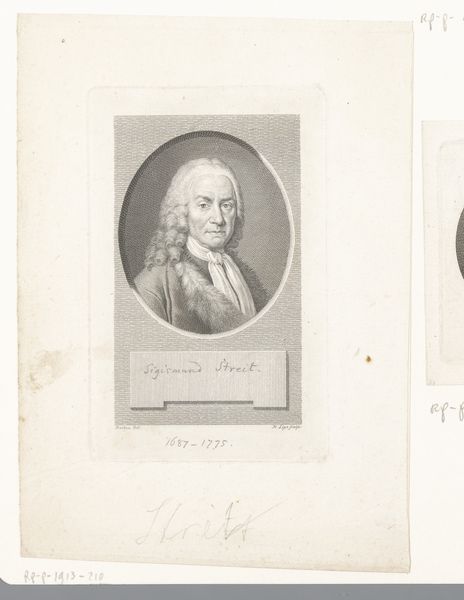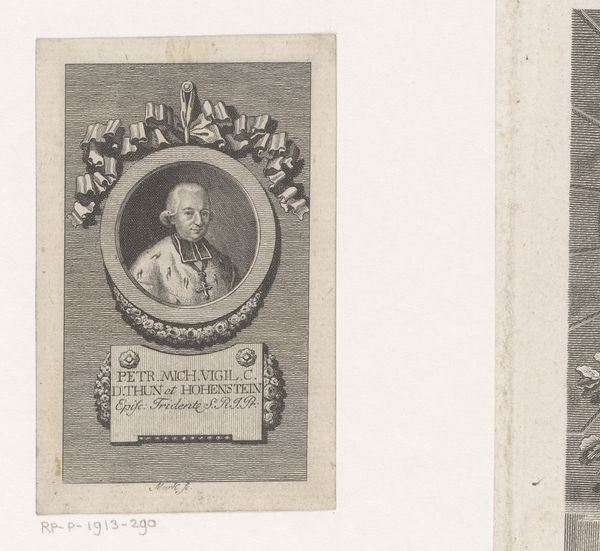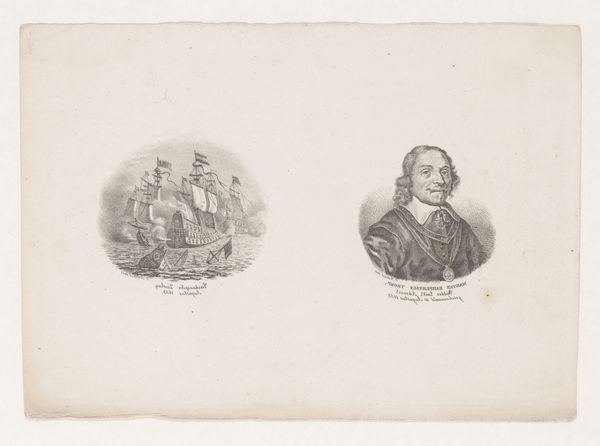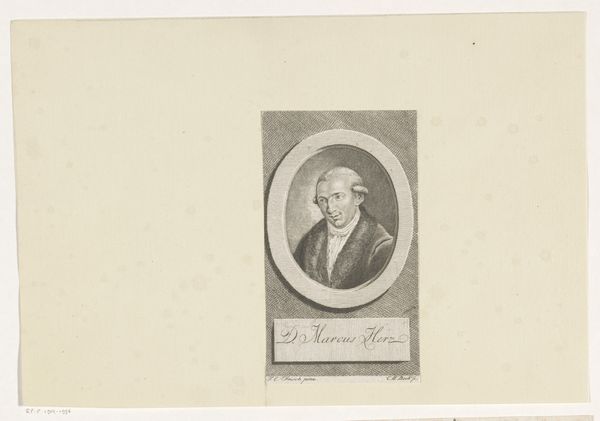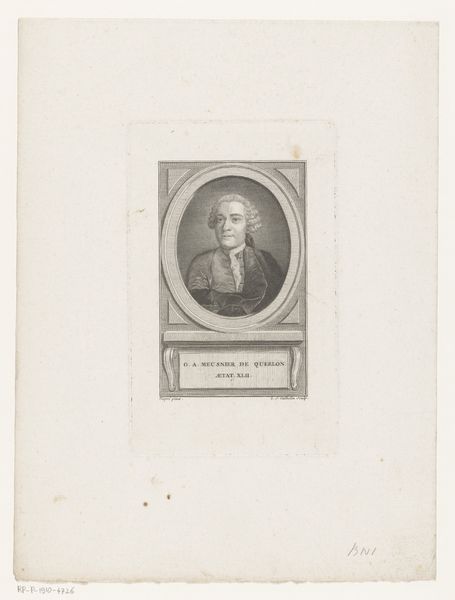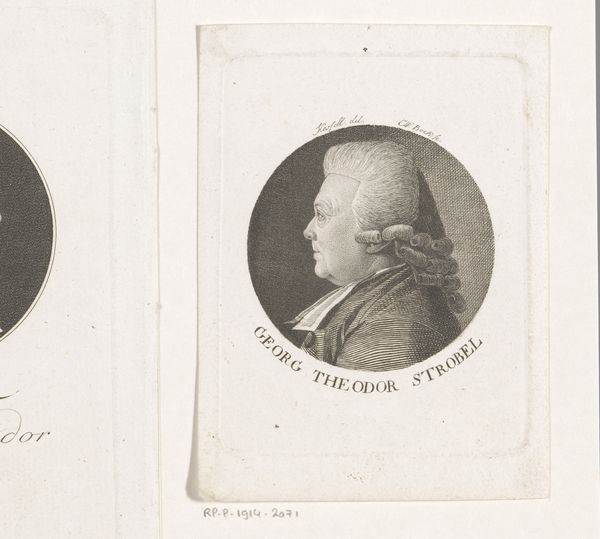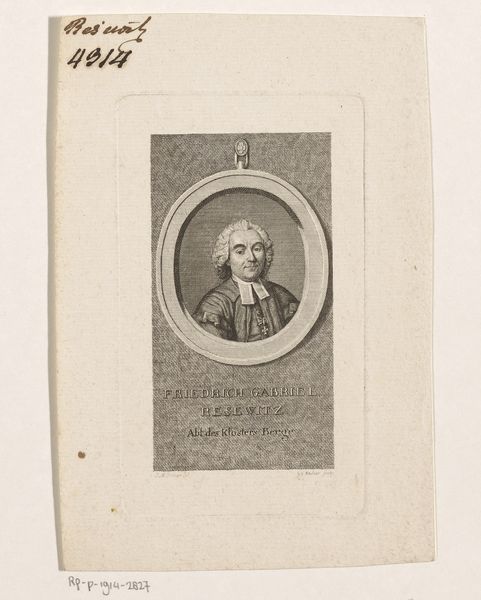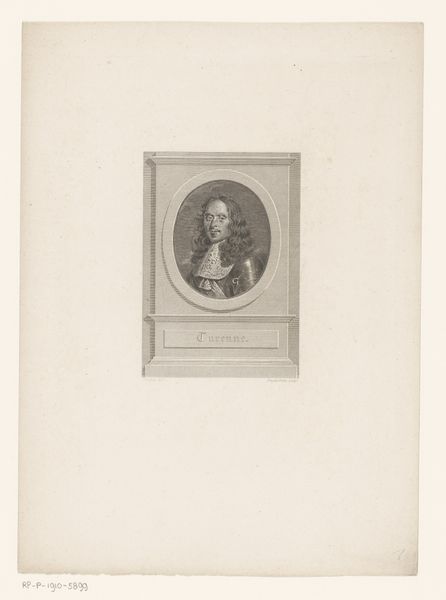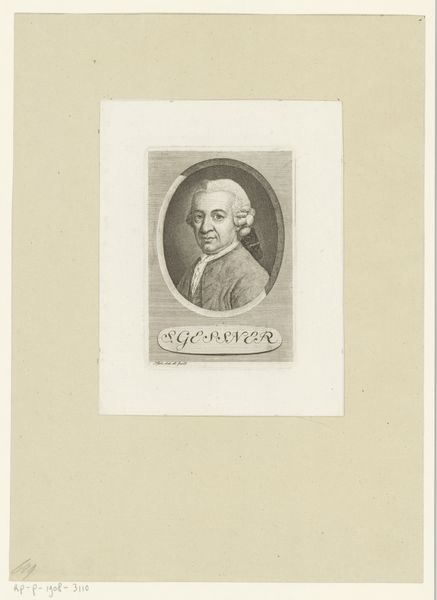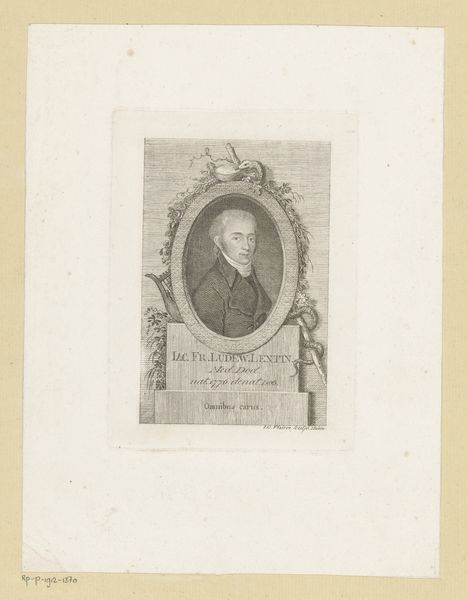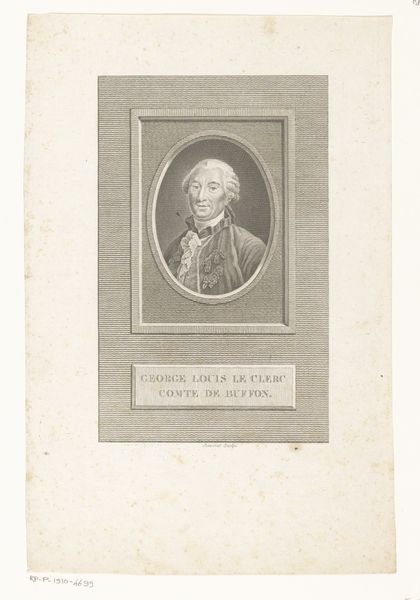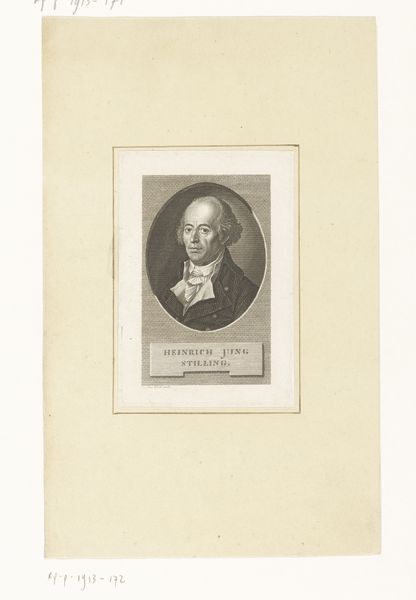
print, engraving
#
portrait
#
neoclacissism
# print
#
history-painting
#
engraving
Dimensions: height 80 mm, width 100 mm
Copyright: Rijks Museum: Open Domain
Editor: This is "Portrait of Heinrich Eberhard Gottlob Paulus," dating from between 1768 and 1817, by Johann Heinrich Lips. It's an engraving, so a print, located at the Rijksmuseum. It feels very… formal, I suppose? Almost severe. What do you see in this piece that maybe I'm missing? Curator: I see a perfect example of how neoclassicism sought to portray individuals within a specific socio-political framework. Notice the deliberate framing within the circle – almost like a coin or medallion. This immediately elevates the sitter, H.E.G. Paulus, into the realm of historical figures, suggesting lasting importance. What role do you think printmaking plays in achieving that objective? Editor: Well, prints are reproducible, so they allow for wider dissemination. They sort of democratize the image, making it available beyond an elite circle, right? Curator: Precisely. Think about the context: The Enlightenment was emphasizing reason and individual achievement, but power still resided in the aristocracy. Prints like this allowed for the creation of "celebrity" and promoted certain ideologies to a broader public. What is most interesting is that the sitter was a controversial theologian, hinting that his figure promoted conflict in cultural ideology that was publicly disseminated. Considering Lips was a swiss artist and a printmaker in many cities and for diverse public and private interests, how might this contextualize this portrait as both controversial and revolutionary? Editor: Wow, that’s fascinating! I was just seeing a stern portrait, but you're revealing a whole network of cultural forces at play. It's amazing how the format of print itself can change how we perceive someone. Curator: Exactly. The visual language – the clean lines, the idealized features – all work to convey authority and virtue in a very calculated way to either influence their personal beliefs or reject it based on political views, prompting reflection. This goes far beyond just capturing a likeness. Editor: So much to think about. Thanks for pointing all that out. I definitely have a new appreciation for this “simple” portrait.
Comments
No comments
Be the first to comment and join the conversation on the ultimate creative platform.
